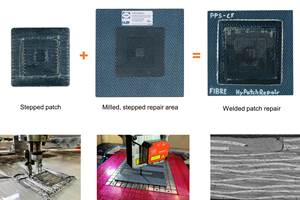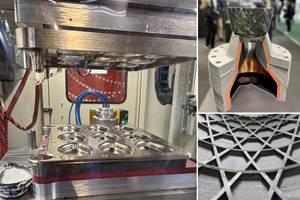Airborne Oil & Gas reinforces energy transition journey as Strohm
Rebranded as Strohm, the company works to confirm its commitment to the oil and gas sector’s goals to reduce the industry’s carbon footprint.
Share
Read Next

Photo Credit: Getty Images
Manufacturer of thermoplastic composite pipe (TCP) Airborne Oil & Gas (IJmuiden, Netherlands), has changed its name to Strohm on Oct. 8. The launch of the new brand comes as the organization confirms its commitment to the oil and gas sector’s energy transition and accelerates its strategic growth into the renewables market.
According to the company, it was the first in the world to develop TCP and its low-cost, corrosion-resistant products have been successfully supporting the oil and gas sector for the past 13 years. Strohm also notes that it has built up what is says is the world’s largest track record for TCP with most major oil and gas companies using its qualified products for jumper, flowline and well intervention applications.
Further, Strohm has now firmly proven and established TCP’s value as a sustainable solution following analysis carried out to global Greenhouse Gas Protocol’s (GHG Protocol) emission measurement and management standards. For example, the research has proven that installation of its TCP delivers a 50% smaller carbon footprint compared to traditional steel alternatives, and that Strohm’s TCP manufacturing process produces 40% lower CO2 levels compared to that of carbon steel pipe.
TCP’s mechanical properties and application also show promise. TCP’s lightweight, high strength properties allow it to be efficiently installed either through horizontal lay systems onboard of small multi-purpose vessels, or (for TCP jumper spools) through a subsea deployment pallet, eliminating the need for two separate vessel campaigns to deliver metrology and then installation. Once installed subsea, it requires no maintenance or corrosion inhibitors, providing a solution that has full life-cycle sustainability.
Research results have identified further areas of growth where Strohm’s products can help maximize economic recovery for oil and gas operators as they transition towards a low-carbon future. Strohm has also pivoted its product development to include a program suitable for renewables.
“As the industry works towards climate reduction targets and the focus sharpens on green energy production, the time was right for us to refocus and align our brand in this direction,” says Oliver Kassam, Strohm CEO. “Using the globally recognized GHG Protocol standards, we have proven TCP’s value as a sustainable solution which will further aid organizations with their standardization and energy transition strategies. We have also identified significant growth for TCP in the hydrogen and offshore wind markets, supporting both bottom-fixed and floating wind projects.
Kassam notes that behind the company’s success is its loyal and talented workforce, and thanks all of Strohm’s employees and stakeholders.
“Back in 2014, Airborne Oil & Gas’ potential was already evident as a leader in disruptive technology. We invested in them, confident of the lasting impact they would have on the offshore industry,” acknowledges Geert van de Wouw, vice president of Shell Ventures. “Since then, we have seen the company bring products to the market that realize material cost impacts for flowlines and jumpers, and we continue to collaborate towards the same success with risers. We now welcome and encourage Strohm to progress its plans and take the next step in supporting our sector to achieve our carbon footprint goals.”
Related Content
Developing repairs for thermoplastic composite aerostructures
HyPatchRepair project proves feasibility of automated process chain for welded thermoplastic composite patch repairs.
Read MorePlant tour: Airbus, Illescas, Spain
Airbus’ Illescas facility, featuring highly automated composites processes for the A350 lower wing cover and one-piece Section 19 fuselage barrels, works toward production ramp-ups and next-generation aircraft.
Read MoreWelding is not bonding
Discussion of the issues in our understanding of thermoplastic composite welded structures and certification of the latest materials and welding technologies for future airframes.
Read MoreJEC World 2024 highlights: Thermoplastic composites, CMC and novel processes
CW senior technical editor Ginger Gardiner discusses some of the developments and demonstrators shown at the industry’s largest composites exhibition and conference.
Read MoreRead Next
All-recycled, needle-punched nonwoven CFRP slashes carbon footprint of Formula 2 seat
Dallara and Tenowo collaborate to produce a race-ready Formula 2 seat using recycled carbon fiber, reducing CO2 emissions by 97.5% compared to virgin materials.
Read MorePlant tour: Daher Shap’in TechCenter and composites production plant, Saint-Aignan-de-Grandlieu, France
Co-located R&D and production advance OOA thermosets, thermoplastics, welding, recycling and digital technologies for faster processing and certification of lighter, more sustainable composites.
Read MoreVIDEO: High-volume processing for fiberglass components
Cannon Ergos, a company specializing in high-ton presses and equipment for composites fabrication and plastics processing, displayed automotive and industrial components at CAMX 2024.
Read More
















.jpg;maxWidth=300;quality=90)









